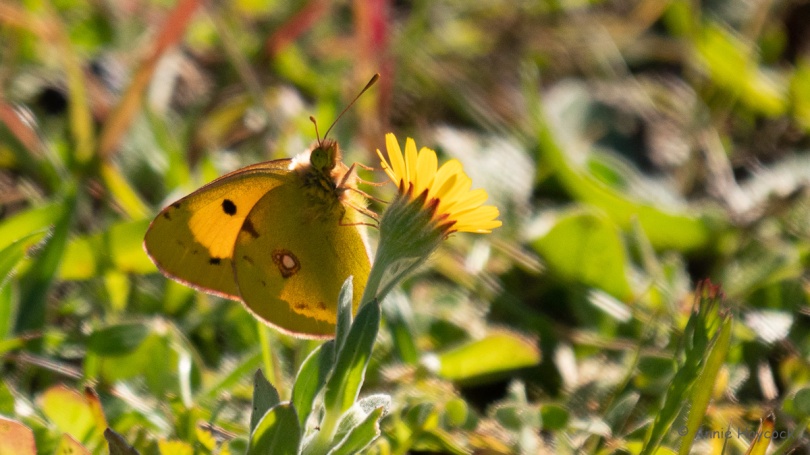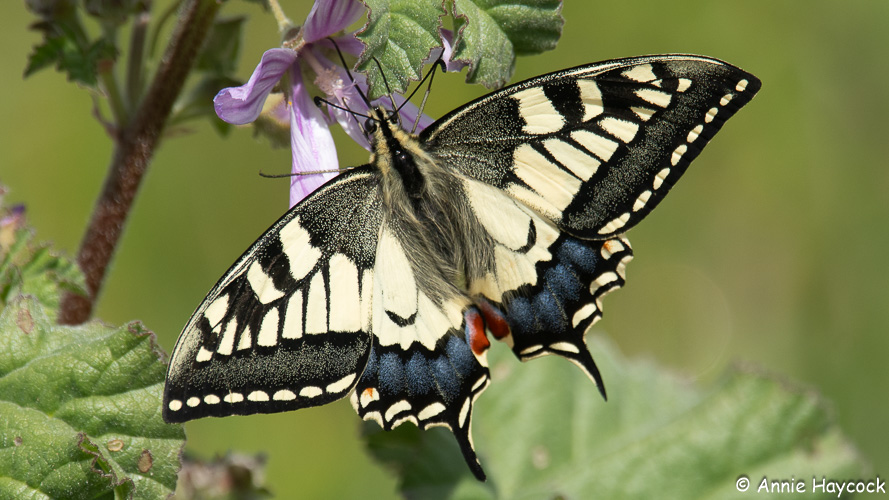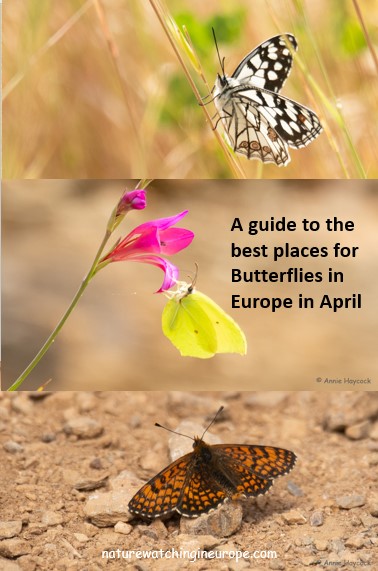
In April, it seems that everything is happening all across southern and central Europe. Birds are nesting everywhere, flowers are in bloom, while butterflies, bees, dragonflies and other insects are taking advantage of the bounty of nectar, pollen, and whatever else they can find. Northern Europe will catch up soon. But is it worth looking for butterflies in April, and where are the best places?
Well, this post is mainly about where tour groups go for butterflies in April.
This page is likely to be updated at any time as more information becomes available.
Disclaimer – I have no connections with these tour companies, and have not used their services. However, as their websites have provided me with useful information, the least I can do is mention them.
The most important species for each region are linked to their page on the EuroButterflies site. More information can be found about most species, by copying their scientific name and pasting it into the search box on that site.
Cyprus
The endemic Paphos Blue butterfly Glaucopsyche paphos flies in April and May, and is widespread across the country.
France
A trip to the southern part of Provence with Mariposa nature holidays should reveal the extremely localised Spring Ringlet Erebia epistygne, on the slopes of Mont Ventoux; elsewhere for Chapman’s Green Hairstreak, Southern Festoon Zerynthia. polyxena, and Spanish Festoon Z rumina. Other spring butterflies include Swallowtails, Cleopatra and Baton Blue in particular on the wing at this time of year.
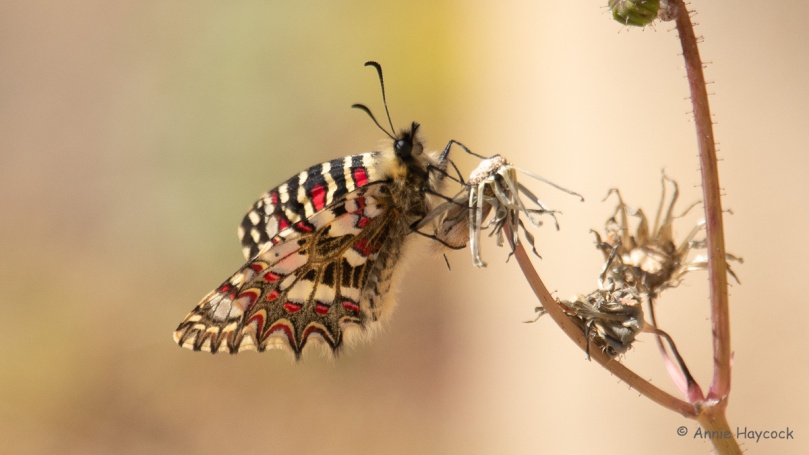
Greece
Northeast Greece has an exceptional flora and fauna because of its transitional geographic position with influences of the Mediterranean, Anatolian and Euro-Siberian regions. Butterflies of very special importance in the East Rodopi Mountains include strong populations of the geographically restricted and regionally endemic species the False Apollo Archon apollinus. It flies for a relatively short period in March-April, whether in its main home of Turkey and the Middle East, or this small European population in mainland Greece and also sometimes seen on the Aegean islands.
Visiting a variety of habitats should reveal other local and interesting species: Eastern Festoon Zerynthia cerisy, Grecian Copper Lycaena ottomana and Southern Festoon Zerynthia polyxena, Eastern Baton Blue Scolitantides vicrama, Powdered Brimstone Gonopteryx farinosa, Eastern Greenish Black-tip Euchloe penia, Small Bath White Pontia chlorodice, Krueper’s Small White Pieris krueperi, Nettle-tree Butterfly. Southern Comma Polygonia egea and Camberwell Beauty Nymphalis antiopa. You may also see other early spring species such as Large Tortoiseshell Nymphalis polychloros, Eastern Dappled White Euchloe ausonia, Green-underside Blue Glaucopsyche alexis and Green Hairstreak Callophrys rubi.
On Rhodes the flowers are blooming, and the spring butterflies are out in force – such as Green Underside Blue, Long-tailed Blue, Large Wall Brown, Eastern Festoon & both Scarce and European Swallowtail.
Italy
The Gargano in southern Italy is considered to be one of Europe’s finest natural rock gardens. Not only flowers, but also spring butterflies such as the Southern Festoon, Cleopatra and Provence orange tip.
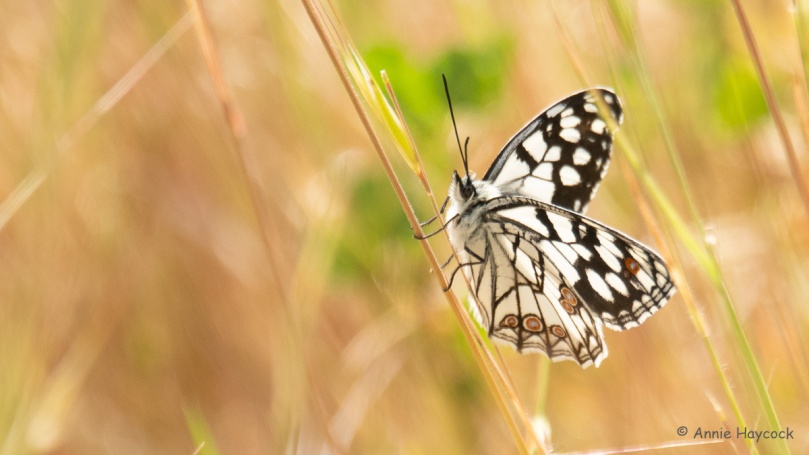
Portugal
April in the Algarve can be gloriously fine and sunny, but early mornings can be grey, and cool, and sometimes downright cold. Nevertheless, flowers are usually abundant, especially along the coastal cliffs, and with them, a variety of butterflies and other insects. Spanish festoons and southern scarce swallowtail have passed their peak, but western dappled white, black-eyed blue, false baton blue, Adonis blue, Spanish brown argus, queen of Spain fritillary, Provencal Fritillary, Spanish marbled white and red underwing skipper should all be around. Further inland, there are also colonies of Panoptes blue.
Towards the end of the month, you could find two-tailed pasha, southern gatekeeper, the Iberian form of the meadow brown, and several species of skipper. Even the marsh fritillary is in flight, a good month earlier than in Britain.
Further north in the Alentejo region, we encountered brimstones, green-striped white, swallowtail, painted lady, Provençal Fritillary, mallow skipper, Spanish marbled white, small heath, small copper, western dapped white, and small white early in the month.
Madeira – the endemic Madeiran Cleopatra Gonopteryx maderensis, as well as clouded yellow, speckled wood, and the Indian red admiral were all active in April.
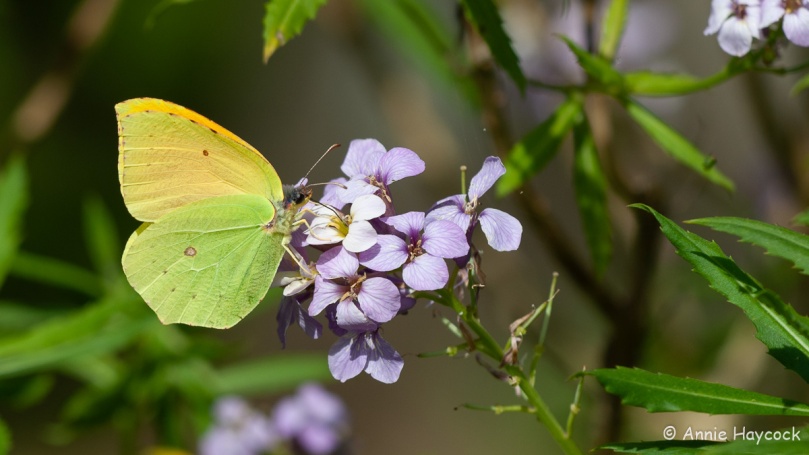
Spain
Mainland
Butterflies can fly early in Spain, but it does depend on the weather. In Los Monegros, a large dry region of north-east of Zaragoza, daytime temperatures in April are cool – broadly between 18 and 25c, and the landscape is far lusher and more verdant than during the summer. Here, you should find the endemic Spanish Greenish Black-tip Euchloe bazae ssp iberae – known only from this region where it inhabits the dry, stony hillsides. Other species to look for include the Sooty Orange Tip Zegris eupheme, Provence Orange Tip Anthocharis euphenoides and Portuguese Dappled White. The Stunning Provence Hairstreak Tomares ballus should also be flying.
Further north, the pretty hilltop village of Berdún, nestling at the foot of the Pyrenees makes a good base from which to search for the flaming, bright Spanish Fritillary Euphydryas desfontainii and, at lower elevations, ruderal fields and their hilly margins for the Spanish Greenish Black-tip Euchloe bazae ssp iberae (restricted to a few discrete areas of Spain), and Sooty Orange Tip Zegris eupheme. Other species include Weaver’s Fritillary Boloria dia, Knapweed Fritillary Melitaea phoebe, Baton Blue Pseudophilotes baton and Green-underside Blue Glaucopsyche alexis.
To the south of Zaragoza, in the Montes Universales you’ll find another selection of species, including the Spring Ringlet Erebia epistygne, which is known only from here in Spain and a few small areas in Southern France. Another endemic flying at this season is the Iberian Sooty Copper Lycaena bleusei, which is endemic to the Iberian Peninsula. Other species to look for include Panoptes Blue Pseudophilotes panoptes, Black-eyed Blue Glaucopsyche melanops, and Chequered Blue Scolitantides orion. Large Tortoiseshell Nymphalis polychloros, Iberian Scarce Swallowtail Iphiclides feisthamelii, Spanish Festoon Zerynthia rumina and Camberwell Beauty Nymphalis antiopa. And if it is a really early season, there is a chance of later species like Western Marbled White Melanargia occitanica and de Prunner’s ringlet Erebia triaria, Queen of Spain Fritillary Issoria lathonia, Provençal Fritillary Melitaea deione, Knapweed Fritillary Melitaea phoebe, and a few others.

Canary Islands
Mariposa Nature Holidays say there is no ‘off-season’ for butterflies on Tenerife. Its southerly latitude and maritime location ensure that daytime temperatures are almost constantly above 16c. So an excellent place for butterfly-hunting at any time.
The laurel forests of the north are home to the Canary Large White Pieris cheilanthi, and Canary Brimstone Gonepteryx cleobule, Canary Red Admiral Vanessa vulcania, and Canary Skipper Thymelicus christi, whilst the endemic Tenerife Green-striped White Euchloe eversi is found at higher altitudes.
Parks and botanic gardens can be good for butterflies; for example Monarch Danaus plexippus, African Grass Blue Zizeeria knysna, American Painted Lady Vanessa virginiensis, and the exotic African Migrant Catopsilia florella, and Canary Speckled Wood Pararge xiphioides, whilst Long-tailed Blue Lampides boeticus, Geranium Bronze Cacyreus marshalli, and Bath White Pontia daplidice should also make an appearance.
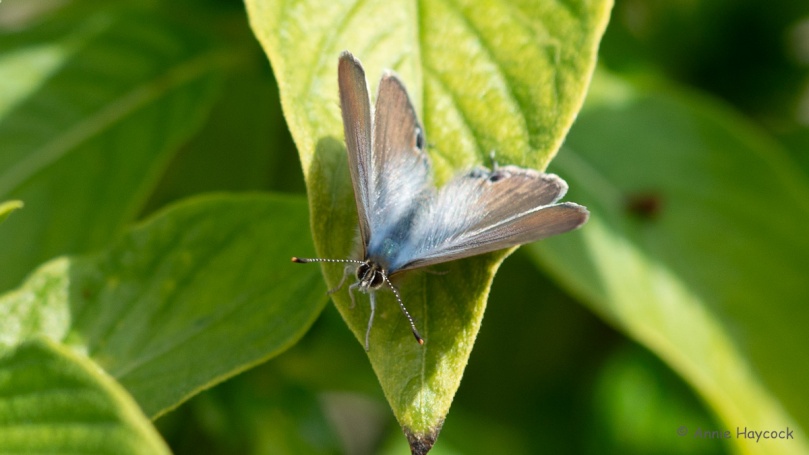
And then there is the endemic Canary Blue Cyclyrius webbianus that flies in grassy flowery places amongst trees and scrub across the western Canary Islands.
Bookshop
Click on the covers for more information:
I can’t find any other butterfly books that cover southern Europe (several are out of print). However, there is Guia de les Papallones Diürnes de Catalunya [Guide to the Diurnal Butterflies of Catalonia] which includes distribution maps for north-east Spain, but the text is in Catalan.
More about butterfly-watching in Europe
Best places for Wildlife in April
Where to go for the best wildlife and nature experiences in Europe in April
Butterfly-watching in January-February
You can see a few butterflies in southern Europe in winter, but it’s just a taster for things to come later in the year.
Seven reasons to visit Caldey Island
Caldey, near the seaside town of Tenby in Wales, is easier to get to than the other Welsh Islands, and has much to offer.

